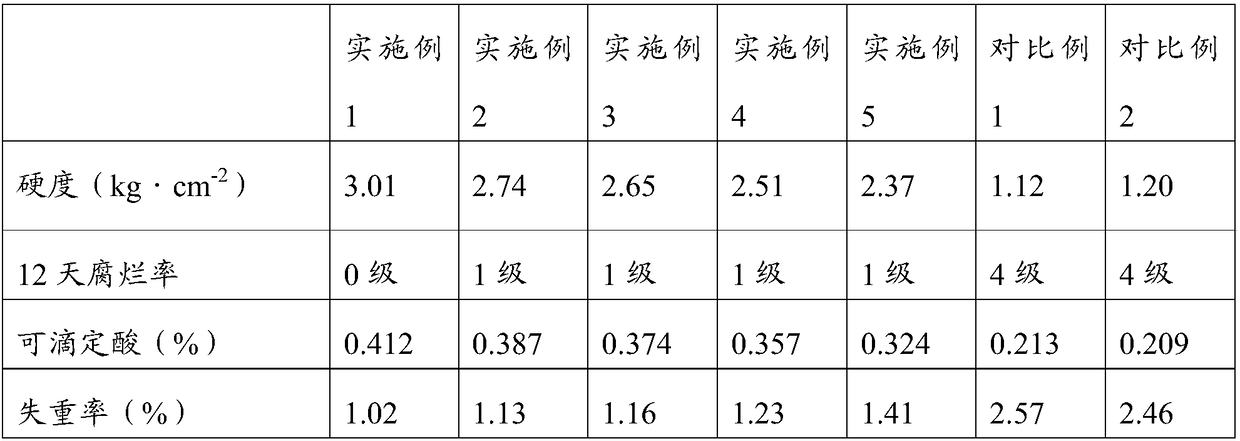Mould-proof preservative film and preparation method thereof
A fresh-keeping film and anti-mildew technology, applied in anti-fouling/underwater coatings, coatings, paints containing biocides, etc. problems, to achieve the effect of improving the storage life of food, good anti-mold effect, and preventing the growth of microorganisms
- Summary
- Abstract
- Description
- Claims
- Application Information
AI Technical Summary
Problems solved by technology
Method used
Image
Examples
preparation example Construction
[0026] The preparation method of the above-mentioned mildew-proof fresh-keeping film according to an embodiment of the present invention comprises the following steps: taking each raw material according to the mass fraction to prepare the mildew-proof fresh-keeping coating, unwinding the base film so that the base film passes through the coating roller to coat the mildew-proof The fresh-keeping paint is then dried in an oven, cooled by a cooling roller, and finally rolled to obtain a mildew-resistant plastic wrap.
[0027] Specifically, the oven has 3-5 sections, the temperature rises first and then decreases in a gradient, the moving speed of the base film is 60-180 m / min, and the temperature of the cooling roll is 20-35°C.
[0028] Optionally, the method for preparing the above-mentioned anti-mold and fresh-keeping coating in an embodiment includes the following steps S1-S3:
[0029] S1. Weigh each raw material according to the parts by mass.
[0030] S2. Put the resin and ...
Embodiment 1
[0035]Weigh each raw material according to the following parts by mass: 62 parts of resin, 5 parts of sodium diacetate, 1 part of arbutin, 1 part of thymol, 2 parts of Houttuynia cordata injection, 2 parts of astragalin, 2 parts of quercetin 0.4 parts, 1 part of soybean isoflavone, 0.8 parts of spermidine trihydrochloride, 0.2 parts of rutin, 0.8 parts of chlorogenic acid, 32 parts of water, 0.5 parts of surfactant, 0.5 parts of leveling agent and 0.5 parts of dispersant. Among them, the resin is composed of the following components by mass percentage: 32% ethylene-vinyl acetate copolymer, 38% polyvinylidene chloride, 14% ethylene-vinyl alcohol copolymer, 12% core-shell structure acrylate copolymer and 4% IPN structural polyurethane. Put the resin and water into the reaction kettle, heat the reaction kettle to 50° C., turn on the stirring device, and stir at 600 rpm for 1 hour. Then put the remaining raw materials into the reaction kettle, and continue to stir at 1000 rpm for...
Embodiment 2
[0037] The experimental procedure of Example 2 is basically the same as that of Example 1, except that the raw materials do not include ascarin and quercetin.
PUM
 Login to View More
Login to View More Abstract
Description
Claims
Application Information
 Login to View More
Login to View More - R&D
- Intellectual Property
- Life Sciences
- Materials
- Tech Scout
- Unparalleled Data Quality
- Higher Quality Content
- 60% Fewer Hallucinations
Browse by: Latest US Patents, China's latest patents, Technical Efficacy Thesaurus, Application Domain, Technology Topic, Popular Technical Reports.
© 2025 PatSnap. All rights reserved.Legal|Privacy policy|Modern Slavery Act Transparency Statement|Sitemap|About US| Contact US: help@patsnap.com

